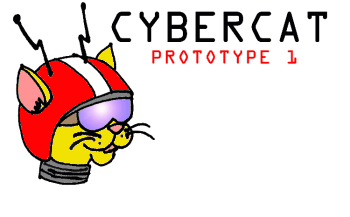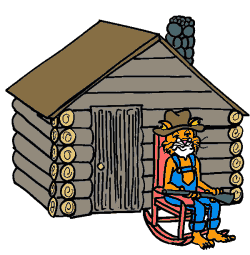
| Home | About | Coming Soon | Specials | Catalog | Dealers | Links |
New Product Spy Shots
|
This page is dedicated to providing a preview of what is soon to be released from Garrison Aerodrome. As the past year or so has gone by, we've been trying to become better at working with and processing EPP foam so that we can design and manufacture better kits for our customers. |
Cyber Cat 2 Meter Glider
Well, we did it, but not successfully on the first try. The pictures below are of
the P1 Cyber Cat. It
uses an Eppler 205 throughout, modified for thickness at the root only. The wing
planform (and also the plane's name) came from Dennis Adamisin who suggested it so
that we could use a straight spar joiner matrix. Dennis used the same concept on
his one of a kind two meter that he calls the Cyber Crow.
Because of this, I guess you'd call the Cyber Cat a collaborative design. The
fuselage is all mine (including the blame). The tips are Pat Mattes' from the
Push-E Cat, and the planform, of course, is mostly Dennis' fault.
Another issue was that the extremely thin (for a foamie) fuselage at the tail allowed
the control group to "wag". This was also unacceptable.
The result of all these lessons was the formation of the concept of composite EPP
fuselage construction. I went back to the shop and built a second fuselage with carbon
and wood reinforcements added to the tail boom and a central balsa "crutch" which ran
from the wing TE to just behind the nose. I did a composite tail group which included
a corrugated plastic fin and stab with lightening holes and balsa rudder and elevator
flying surfaces. The fuselage length was constrained by the length of the EPP billets
we use in production, which is about 34 inches usable.
The P2 Cyber Cat took to the air at the end of the 1999 season. It launched about the
same as a Spirit and flew reasonably well. However, it was hampered by excessive weight
due to the need for significant nose weight. I continued to fly the P2 until it
suffered a catastrophic spar failure on launch after the season was officially ended.
P2 has been rebuilt to temporarily serve me as a 2 meter plane until I can get P3 or
my DJ Aerotech Spectre built. The nose has been lengthened to reduce the need for nose
weight, and the wing has been repaired and reinforced.
The P3 will be the final pre-production model. It will feature a revised airfoil (3021)
and a more robust fabricated spar matrix. The fuselage will be stretched overall to
allow the same fuselage to accept 2 meter and 100 inch wings, as well as standard
servos and radio gear. The wing has been modified to use a basswood sub-trailing edge
and balsa TE to allow for control surface variation.
The final production Cyber Cat kit will allow the builder to fabricate the model as a
rudder/elevator, rudder/elevator/spoiler, rudder/elevator/flap, or as a full house
glider. The wing will come pre-routed to accept micro servo driven spoilers.
The Cyber Cat is a slightly longer lead time project. I am sure that it will prove to
be a great flyer and popular model once we finish development.
|
Problems with the function of this web site? Please contact:
![]()
Copyright © 1999, Garrison Aerodrome R/C Model Enterprises, All Rights Reserved

